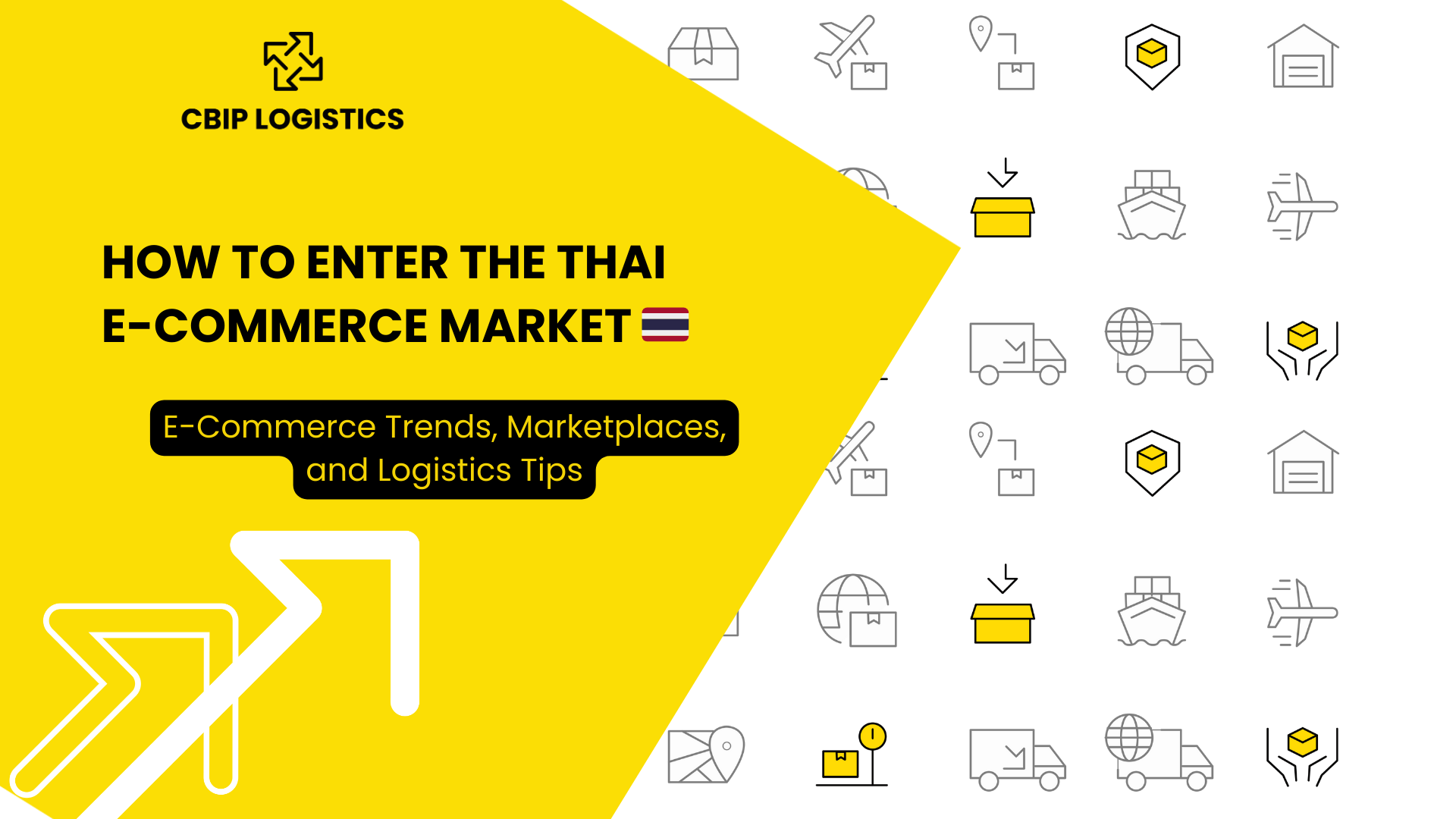ASEAN Market Series: How to Enter the Thai E-Commerce Market 🇹🇭

E-commerce in Thailand is expected to grow at a rate of 11.73% between 2023 and 2027. Not a bad place to be strategizing for your next e-commerce expansion.
While it may seem like the pandemic started the e-commerce craze in much of the world, Thailand was already developing out its e-commerce retail infrastructure long before COVID-19. Post-pandemic, the trend continues with a renewed fervor.
E-commerce in Thailand has grown like wildfire in the past several years. In 2018, there were 310 new e-commerce businesses registered with registered capital of 545 million baht. This year, 7,393 new businesses registered with capital of 43.7 billion baht.
DTC companies looking to expand into Thailand: there are some key factors you need to consider before making any investments. Just like we did with the other installments in our ASEAN e-commerce market series, we will run through several points that make this e-commerce market unique, including:
- E-commerce trends
- Logistics environment
- Challenges and opportunities
Read About CBIP's Full-Service Adaptable Logistics Solutions
Thai e-commerce trends
According to DEPA (Digital Economy Promotion Agency), online purchases in Thailand are expected to grow a whopping 20% in 2024.
That kind of growth certainly makes space for new products and entrants to the Thai e-commerce market. The question is, what kind of products/companies do Thai consumers want?
Social media & Live commerce
Alongside India and China, Thailand has the highest rate of live commerce sellers. Social media in itself is a mega-popular space for e-commerce shopping in the nation, with live commerce making up a large part of sales made off of social media sites.
Recent statistics from Statista show that seven out of ten social media shoppers purchase using live commerce. As in many Asian nations, the popularity of live commerce in Thailand cannot be overstated.
When it comes to live commerce, who is leading the way? TikTok is the most popular live-selling platform among Thai users, followed by Lazada and Shopee’s live platforms.
Product preferences
According to Statista, the most popular category for Thai e-commerce purchases is clothing and apparel. Fashion makes up about 60% of the market, personal care is a little over 43%, and food and beverage makes up around 35%.
The state of logistics
Over the past several years, many things have changed in Thailand. The Thai government has worked hard to pass new laws and plans to improve the nation’s regulatory environment and infrastructure, much to the benefit of e-commerce companies and shoppers alike.
When it comes to logistics, Thailand has been experiencing rapid growth in the past several years to accommodate new demands for e-commerce delivery.
Who are the major carriers?
You’ll see some international carriers, such as DHL, but many of the nationally popular e-commerce platforms have their own courier services. These major services include Lazada’s Lazada Express and Shopee’s Shopee Express.
Update on investment
The Thai government has been making some major investments to stimulate the economy, particularly when it comes to stimulating retail shopping. One of the main areas receiving investment from private and state investors alike is digital banking.
50% of Thai e-commerce shoppers pay for their goods using the cash-on-delivery method. Considering the inefficient nature of accepting payment on delivery as a DTC company, the focus on improving digital banking will be a great improvement to last-mile efficiency in Thailand.
Apart from banking, flourishing tourism and growing business demands in the nation have prompted the Thai government to improve transportation infrastructure. The Thai government plans to invest 19.4 billion USD into the construction of various motorways, ports, and trains between 2024 and 2025.
RELATED: The Future of Warehousing in Southeast Asia
Challenges and opportunities
The government in Thailand has created various tax incentives to spur retail spending, but growth has slowed somewhat. Many think that this slowdown in growth is due partly to the market being flooded with uber-cheap products from China
However, the government is taking action to improve the situation, adding a VAT of 7% on imported goods worth less than THB 1,500 (about 40 USD). This measure, aiming to protect the Thai market from cheap goods and price gouging, may make it more difficult to sell cross-border to Thai consumers.
Team up with a 4PL that knows E-Commerce in Asia
As a foreigner, maybe you’ve explored the streets of Bangkok and tasted Thai delicacies, but when it comes to logistics, it's a lot harder to find your way around.
That’s why we exist. We are CBIP, and we represent a new kind of 4PL.
At CBIP, we are not just your hands-off, cookie-cutter logistics provider. Rather, we are a logistics partner that will work alongside you to discover your major pain points and goals for your business and construct a logistics operation unique to your needs.
We are located in Hong Kong, but we are also all over the world. As a 4PL, we do not own any of our own warehouse or other provider resources. Instead, we leverage an extensive network of providers that we work with and trust, all over the world.
We set you up with those providers, and if something doesn’t work how it should, we find a new provider who better suits your needs.
Our goal is to never stop pushing your business forward, and we do that by being incredibly flexible about what we can do for you, and by always listening to your needs and pain points. If you are interested in having a free logistics consultation over the phone with one of our proud employees, reach out today to set up an appointment.






